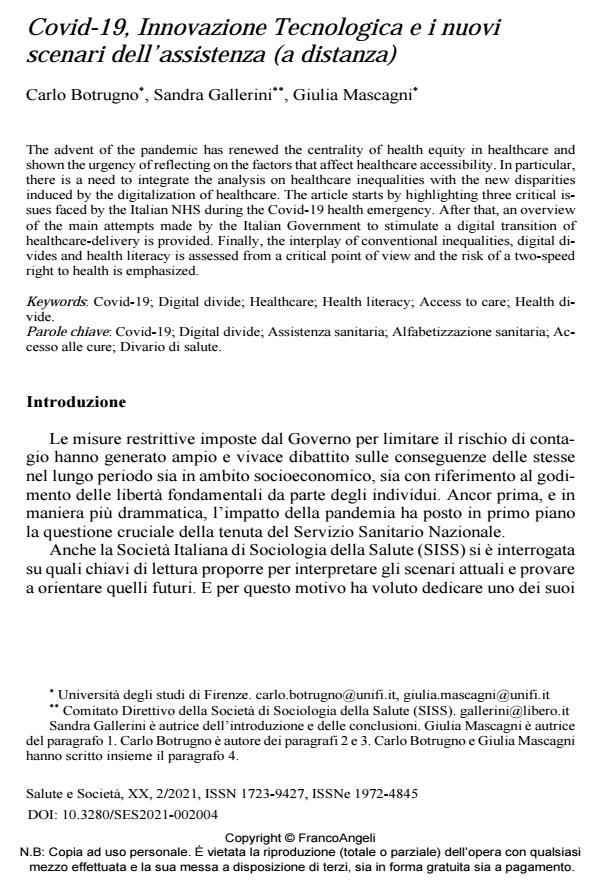Covid-19, Innovazione Tecnologica e i nuovi scenari dell’assistenza (a distanza)
Titolo Rivista SALUTE E SOCIETÀ
Autori/Curatori Carlo Botrugno, Sandra Gallerini, Giulia Mascagni
Anno di pubblicazione 2021 Fascicolo 2021/2
Lingua Italiano Numero pagine 19 P. 40-58 Dimensione file 231 KB
DOI 10.3280/SES2021-002004
Il DOI è il codice a barre della proprietà intellettuale: per saperne di più
clicca qui
Qui sotto puoi vedere in anteprima la prima pagina di questo articolo.
Se questo articolo ti interessa, lo puoi acquistare (e scaricare in formato pdf) seguendo le facili indicazioni per acquistare il download credit. Acquista Download Credits per scaricare questo Articolo in formato PDF

FrancoAngeli è membro della Publishers International Linking Association, Inc (PILA)associazione indipendente e non profit per facilitare (attraverso i servizi tecnologici implementati da CrossRef.org) l’accesso degli studiosi ai contenuti digitali nelle pubblicazioni professionali e scientifiche
The advent of the pandemic has renewed the centrality of health equity in healthcare and shown the urgency of reflecting on the factors that affect healthcare accessibility. In particular, there is a need to integrate the analysis on healthcare inequalities with the new disparities in-duced by the digitalization of healthcare. The article starts by highlighting three critical issues faced by the Italian NHS during the Covid-19 health emergency. After that, an overview of the main attempts made by the Italian Government to stimulate a digital transition of healthcare-delivery is provided. Finally, the interplay of conventional inequalities, digital divides and health literacy is assessed from a critical point of view and the risk of a two-speed right to health is emphasized.
Parole chiave:Covid-19; Digital divide; Assistenza sanitaria; Alfabetizzazione sanitaria; Ac-cesso alle cure; Divario di salute.
Carlo Botrugno, Sandra Gallerini, Giulia Mascagni, Covid-19, Innovazione Tecnologica e i nuovi scenari dell’assistenza (a distanza) in "SALUTE E SOCIETÀ" 2/2021, pp 40-58, DOI: 10.3280/SES2021-002004